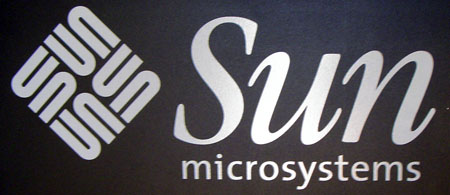Sun Fire V40z: Four Opterons in a 3U
by Kristopher Kubicki on February 22, 2005 12:05 AM EST- Posted in
- Systems
Introduction
Several weeks ago, we took a look at Sun's first attempt at an Opteron workstation with the W2100z workstation. Today, we have a follow up to that piece of hardware with the acclaimed Sun Fire V40z 4-way Opteron 850 entry server. The Sun Fire V40z is the first four-way Opteron lineup in Sun's portfolio; the two-way variation of the V40z is dubbed the V20z.The V40z is an entry-level server geared for everything from data mining to CAE to database work. Granted, "entry-level" for Sun might be a bit different than what other people consider entry-level. Our forums database runs on a similar four-way Opteron machine, currently the 11 th largest forum on the internet. Regardless of application, the need for powerful, reliable servers is still universal. In January, Sun sent us a V40z demonstration unit that was complete with four Opteron 850s and 8GB of PC2700. For the last several weeks, we spent some time getting to know the machine while it ran data mining exercises on our own Price Engine database.
With the recent introduction of AMD's Opteron/Athlon64 "E4" stepping, Sun has also introduced a newer version of the Sun Fire V40z based on four Opteron 852 processors and PC3200 memory. Availability for the four-way 2.6GHz Sun Fire V40z is a few weeks away, and in the interim, Sun reduced prices on the entire V40z lineup and also put a few rebates out. The machine that we reviewed has an MSRP of $20,995, but there are several rebates available through Sun.com right now that make the machine a bit more desirable (and affordable).
The Sun Fire V40z is fully supported under Windows Server 2003 and (of course) Solaris, but our primary focus on this initial analysis of the V40z is under Linux. In particular, Red Hat 9 came preconfigured on our demo unit. SUSE Professional and Enterprise are also certified for the Sun Fire, but the beauty of Linux is that we can completely roll our own distribution with whichever components of SUSE and Red Hat that we need for management or driver support.











38 Comments
View All Comments
tironside - Thursday, February 24, 2005 - link
I agree with dwnwrd. the lom part of it is not great for remote console etc. the lom that the hp stuff has is pretty slick, with a java / web interface. The other main problem I have with this is it offers only raid 1 unless you buy a rather expensive add on card to do raid 5, kind of a teaser to put 6 drive bays and only let you do raid 1... It's a good start, but sun needs to make some changes before it can go mission critical. (raid and lom enhancements imho) while I like cli stuff, trying to get junior people to do complicated cli stuff is dangerous...dwnwrd - Thursday, February 24, 2005 - link
I have some V20s and a V40. The service processor is pretty great except if you try to direct the Linux serial console to it then connect to the "serial over LAN" you'll get a flood of "serial8250: too much work for irq4" and a sleepy system.http://supportforum.sun.com/hardware/index.php?t=m...
Pontius - Thursday, February 24, 2005 - link
I am curious what they are using when they benchmark the linux kernel compile times. They use the time command which spits out three times - real, user & sys. Are they using the sum of all these? If not, something is wrong. Because I did the same test, on the same 2.6.4 kernel using -j2 on a dual 2.8GHz Nocona system and I got a "real" time of 147s. That doesn't seem right because the Opterons are way faster at compilation. On the other hand, if I take the sum of the 3 times, I get 420s. Any thoughts?jlee123 - Wednesday, February 23, 2005 - link
RedHat 9, are you joking!!?? This has got to be a mistake, I can't understand how Sun could be shipping a 64-bit server with a 32-bit OS that's reached End Of Life. It's the equivalent of buying a workstation with Windows ME on it. Also, there was never a official port of RH9 to x86-64, the first x86-64 RedHat was RHEL3, the Fedora team later released FC1 x86-64. If Sun doesn't wish to pay licensing, they'd be better off shipping with FC2, FC3 or CentOS, a free rebuild of RHEL. This hardware isn't even going to begin to be utilized till it's running something more modern like RHEL4 x86-64.JustAnAverageGuy - Wednesday, February 23, 2005 - link
I could think of one use for these. :)http://forums.anandtech.com/categories.aspx?catid=...
lauwersw - Wednesday, February 23, 2005 - link
Standard rule for parallel make is to use 2xnumber of processors available. This gives most optimal results to hide disk latencies and seems to be correct in most cases I've seen.phaxmohdem - Wednesday, February 23, 2005 - link
Call me what you will, but I would like to see some quad/dual Xeon scores to compare to as well (along with price tages for comparison :) )And yes, If I were a rich man who knew what to do with that much computing power, I would have a dozen of these babies in my basement! Who needs women anymore once you have 48 Opteron x50 or x52 cpus humming at your disposal. And drool core? Ahhhhhhhhhhh.
JustAnAverageGuy - Tuesday, February 22, 2005 - link
That thing is a BEAST.I have no idea what I'd do with a computer like that.
MrEMan - Tuesday, February 22, 2005 - link
Kristopher,Thanks for the clarification about the reduced media tag.
E
KristopherKubicki - Tuesday, February 22, 2005 - link
RyanVM: The system used 850s.Kristopher